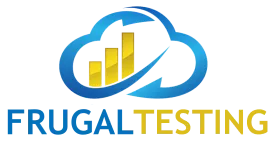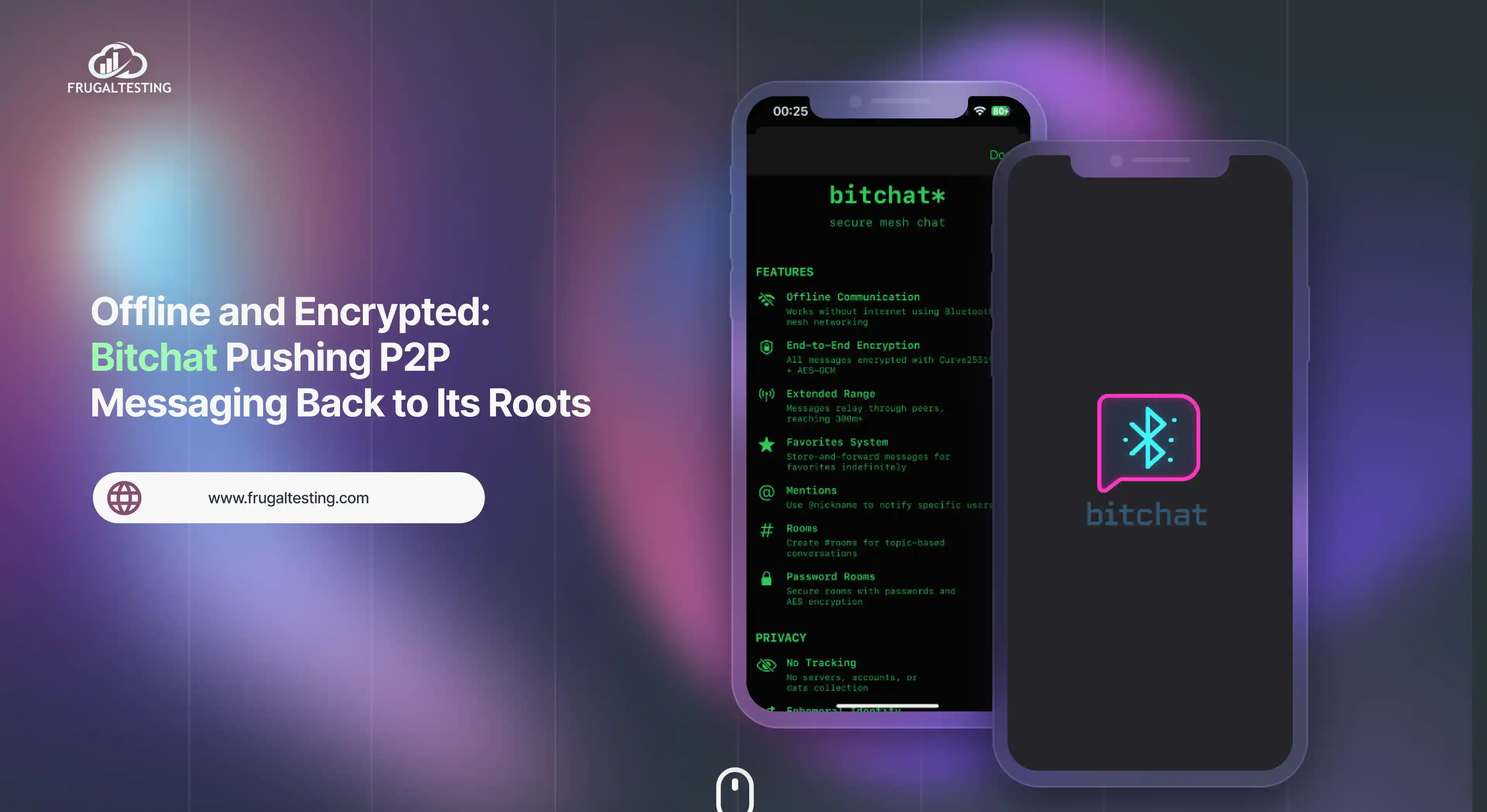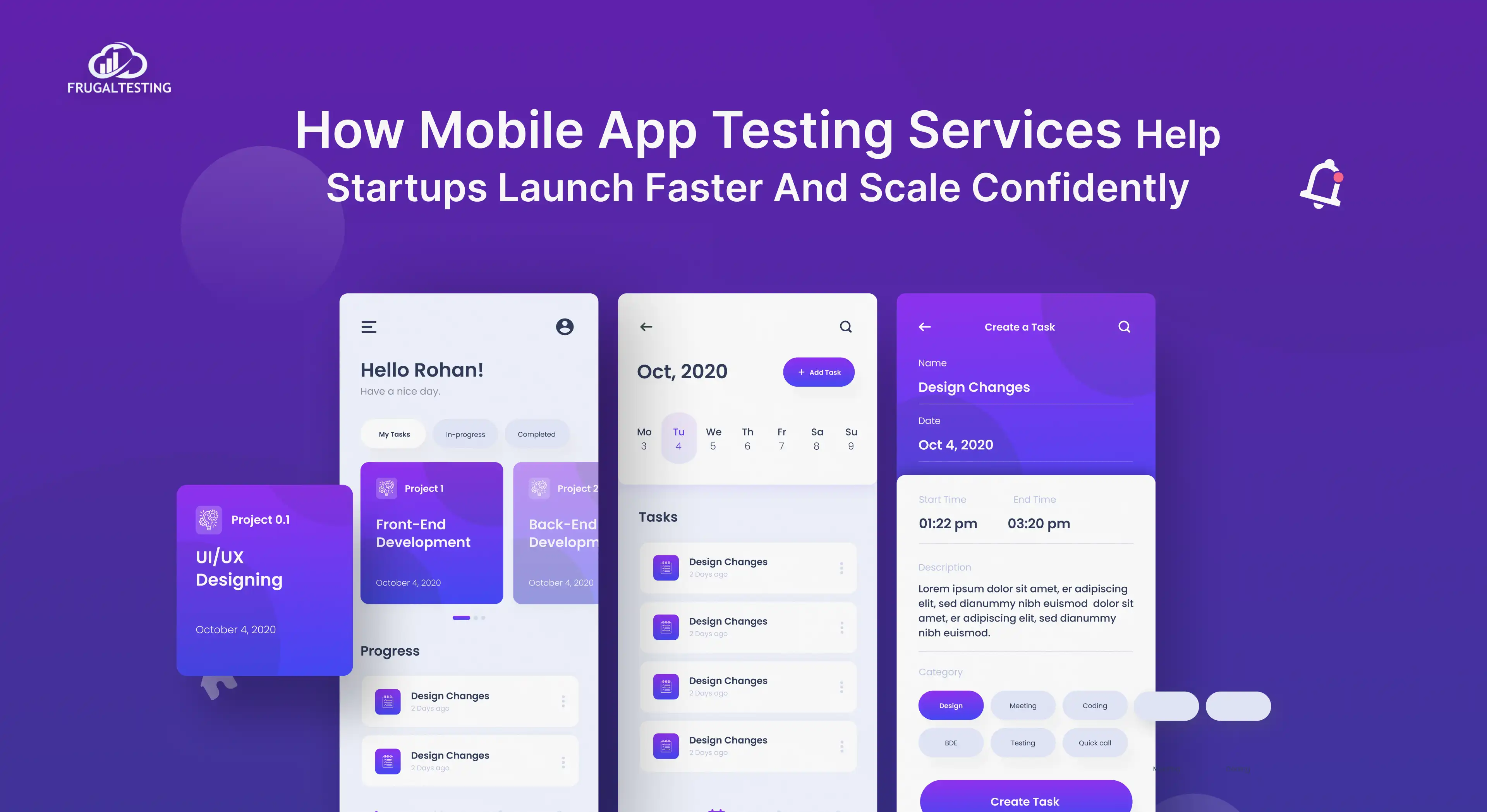Agile testing isn't just about speed; it's about the ability to adapt to ever-evolving Customer satisfaction and market demands.Let’s see what exactly is agile testing and how it reshapes the testing life cycle in agile.
.webp)
Through this blog we will guide you -
📌How the agile testing process is done
📌Why agile testing is essential ?💡
📌Types of Agile testing and agile development testing methodologies with real-world examples
📌Agile Testing Life Cycle and principles
📌Different approaches, handy tools, and agile best practices for testing in 2024
📌Benefits and advantages of agile testing environment in 2025
.webp)
Agile testing attempts to find and fix flaws but also stops them from ever developing.
Join us as we explore the world of agile testing; you can't afford to miss it.
What is Agile Testing?
Agile software testing accepts the 'fail fast, learn faster' mentality, using test results to continuously improve development processes. Agile testing methodology involves coding and testing simultaneously, gradually improving each feature until it offers enough benefits for delivery to production.
Agile software testing and coding are carried out continuously and together, gradually improving each feature until it offers enough benefits for delivery to production.
Let's talk about why agile testing matters so much.
Why is Agile Testing important?
🔍Agile testing process plays an important role because it makes sure that software meets user needs. At each iteration, agile teams collaborate closely with clients to get feedback.
Early finding errors in the development process is another benefit of the agile testing process. Agile teams that execute frequent releases are able to promptly collect user feedback and make the necessary changes.
.webp)
These are essential skills for agile testers:
Early identification of defects: Agile testing includes testing not just at the conclusion of the creation process but also during it. It also means that bugs are found early on, when their fixes are simpler and less expensive.
Focus on the customer: Agile testing strategies puts an extreme value on collecting regular data from users. This ensures that course modifications can be made quickly and that the application is being developed to match business requirements.
Faster shipping: Agile testing speeds up the delivery of functional software features by identifying flaws early on and repeating continually. Agile test phases speed up functional software delivery.
Improved frequency: Continuous testing during the agile testing lifecycle enhances overall software quality.
Let's talk more about the Agile Testing methodologies and examples.
What are Agile Testing methodologies? Explore with Examples
🚀A set of processes called agile testing methods are in line with the basic concepts of agile development testing.
Agile testing is an incremental and iterative process that integrates testing throughout the development lifecycle, Unlike traditional approaches, testing is integrated into the entire agile lifecycle, providing quick feedback.
Here are some popular Agile testing methodologies along with examples:
.webp)
- Scrum Testing: One of the most popular Agile frameworks is Scrum. The development process is divided into several short phases known as sprints in Scrum, which usually run two to four weeks.
Example:The testing team may write test cases based on the user stories chosen for the sprint during the first few days of a two-week sprint. After that, as the development process advances, they would run these test cases and report back to the developers during daily stand-up meetings.
- Extreme Programming (XP): Practices like pair programming, test-driven development (TDD), continuous integration, and frequent releases are highlighted by extreme programming. Before writing any actual code, developers in the XP process write automated tests as a necessary step in the development process.
Example: For a new feature, a developer might begin by creating a unit test that fails. After that, they write the barest minimum of code required to pass the test. They rewrite the code and carry out the procedure again for the next test after the test passes.
- Behavior-Driven Development (BDD): Clear communication between stakeholders is a key component of BDD. Using a common language, usually Gherkin syntax, the team works together to define the desired behavior of the system.
Example: For the shopping cart, an example of a BDD scenario would be: "As a customer, I want to add an item to my cart so that I can purchase it later." This translates into particular test cases which ensure proper operation of this functionality.
- Exploratory Testing: Exploratory testing, which takes a more informal approach, testers actively explore the program and use their imagination to identify possible problems.
Example: To find any unexpected behavior, a tester could experiment with various scenarios during the e-commerce checkout process, such as applying discounts or utilizing different payment methods.
- Acceptance Test-Driven Development (ATDD): Similar to BDD, ATDD focuses on developing acceptance criteria that are approved by the development team and the client.
Example: A shopping cart's acceptance criteria could be specified by the customer, for example, "The cart should display an error message if an invalid credit card number is entered." Next, the group would create tests to make sure this occurs. These are just a few examples; the specific methods used will change based on the nature of the project and the preferences of the team as well as now.
Did you know that there are multiple types of agile testing?
There are many Agile approaches, and each has advantages and disadvantages of its own. The types of testing in agile environments are diverse, each contributing to software quality:
.webp)
- Unit Testing: Testing various software parts or modules to make sure they operate properly when used alone with agile testing principles.
- Integration Testing: confirming that when integrated into bigger modules or systems, individual units function as planned.
- Acceptance Testing: Also known as user acceptance testing (UAT) or customer acceptance testing (CAT), this entails confirming that the software satisfies the needs and expectations of stakeholders or end users..
- Functional Testing: Testing the software's functional requirements to make sure it performs as planned and in keeping with the specifications.
- Regression Testing: Testing to make sure that added features or changes haven't negatively impacted already-existing functioning. It involves retesting software components that modifications may have an impact on.
- Exploratory Testing: Simultaneously collecting knowledge about the software and putting it through its paces through exploration, test design and execution, result understanding and observation capturing.
- User Interface (UI) Testing: Testing the software's graphical user interface to make sure it is easy to use, pleasing to the eye, and works as planned.
- Performance Testing: Checking the software's stability, speed, and response in a range of scenarios to make sure that it satisfies performance standards.
- Security Testing: Identifying weaknesses in the software and making sure it can withstand intrusions, data breaches, and other security risks.
- Automated Testing: Creating scripts or employing technologies to automate test execution may help ensure consistency in testing while also saving time.
- Non-functional Testing: Testing the software's usability, scalability, maintainability, and stability in addition to its particular behaviors.
- Continuous Integration (CI) Testing: Whenever code is modified, tests are immediately run to make sure that the new code blends in smoothly with the current codebase.
Here are few of the common testing types used in an agile environment; other factors, such team inclinations and project specifications, might affect specific kinds and levels of focus on continuous feedback. Each of these agile testing types contributes to a robust agile testing strategy.
Simplifying the Agile Testing Life Cycle: A Comprehensive Overview
Testing is an essential part of Agile development since it ensures that the program works as planned and satisfies user continuous feedback.
We'll explore the Agile testing life cycle in this in-depth instruction, providing helpful tips to simplify and improve your testing procedure.
.webp)
Agile testing lifecycle ensures software meets expectations through continuous testing in agile development. Here’s an overview of the testing process in agile:
- Impact Assessment: The first stage of development in the path is to understand the features of the next version and how they might affect testing. Agile testing strategy helps in tester preparation and simple projects.
- Planning: Based on this knowledge, testers and developers work together to create a test strategy. This plan explains the testing approach, resources, and methods that will be used by business analysts.
- Daily Scrums: Every day, these quick meetings ensure that everyone is in agreement. Testers keep testing in line with the software development process, talk about progress, and point out problems.
- Test Design and Development: Testers create test cases according to the strategy and may even automate them. This ensures thorough testing for the period of the software development process.
- Test Execution: Once tests are set up, testers carefully run them, finding and reporting errors.
- Defect Tracking and Management: The effectiveness of defect management platforms enable engineers to quickly monitor, repair, and retest defects once they are identified.
- Test Review and Improvement: Developers and testers get together to discuss the testing procedure as the iteration comes to a close with business analysts. This makes it possible for future models to continuously develop and adapt.
- Release Readiness: The team verifies the product's deployment ability through extensive testing. This ensures a top-notch release that lives up to user expectations.
Key Principles for Agile Testing Success:
Key Principles for Agile Testing
.webp)
- Collaboration Over Confrontation: Create a working environment where testers, developers, and other stakeholders collaborate easily to achieve common goals.
- Early and Continuous Testing: To minimize rework and identify flaws early in the development lifecycle, integrate testing operations.
- Embrace Automation: Testers may focus on more complicated scenarios and exploratory testing by using automation technologies to handle routine tasks like regression testing.
- Feedback-driven Development: Give priority to user feedback and modify testing plans in response to evolving specifications and expectations from users.
- Iterative Improvement: Develop a mindset of continuous improvement by analyzing your testing procedures on a regular basis, figuring out where the bottlenecks are, and making continuous improvements.
Software development can be done more efficiently and effectively with the help of the Agile Testing life cycle.
Let's explore different approaches and best practices of agile testing in 2024
Agile testing evolves with new techniques and agile methodologies in testing, 2024 will see the continued growth of agile testing as new approaches and best practices are developed to adapt to the shifting demands of the agile software development industry 📊.
In 2024, the following different approaches and best practices of Agile testing will be widely used:
.webp)
- Testing in Production: As continuous delivery pipelines and DevOps approaches become more widely used, testing in production is becoming more and more popular as an effective method of doing Agile testing.
- Chaos engineering: It is a testing methodology that involves intentionally introducing controlled problems or failures into a system in order to proactively detect risks and technical skills.
- Shift-Right Testing: Agile method software continues to be enhanced over time by collecting end-user regular feedback, analyzing system performance, and iterating based on real-world usage data.
- Risk-Based Testing: Teams focus on areas that are essential to the project's success by evaluating the risks connected to certain features or components and deploying testing resources appropriately.
- AI-Powered Testing: As artificial intelligence and machine learning continue to progress, more and more Agile testing processes are using AI-powered testing tools and technical skills.
- Model-Based Testing: This type of testing entails formalizing the behavior of the system and using that model to automatically generate test cases and regular feedback.
- Context-Driven Testing: This technique understands that the best testing strategies can change based on the particular project context, which can include things like team dynamics, project limitations, and customer feedback.
- Crowdsourced Testing: Through the utilization of a worldwide network of testers with diverse experiences, gadgets, and settings, organizations can discover a greater variety of problems and obtain valuable feedback from actual customer feedback.
Best Practices:
.webp)
- Foster Collaboration: Open communication between developers, testers, and stakeholders is essential to the success of agile testing practices. It's essential to have regular meetings, shared resources, and open valuable feedback.
- Prioritize Automation: Agile testing practices for repeated and regression testing activities, use automation tools. This gives testers more time for innovative and exploratory testing technical excellence tasks.
- Expect Change: Because agile projects are dynamic, testers must be flexible. As requirements and priorities change, test plans and cases should be modified accordingly for technical skills.
- Focus on Value: Create test cases based on scenarios and user stories. This ensures that testing provides value and is in line with software development teams of experts.
- Continuous Integration/Delivery (CI/CD): Integrate testing with CI/CD pipelines. This makes it possible to test every code change frequently, identifying problems early and enabling quicker deployments in the testing phase with a team of experts, Automate and streamline the agile testing process.
.webp)
Agile testing teams may ensure the timely and effective delivery of high-quality software in 2024 and beyond by following these methods and agile metrics.
Best tools to use for Agile Testing 2024
Throughout the software development life cycle, functional tests are continuously created, produced, run, and assessed in the iterative process known as agile testing 🎯.
These test management tools are useful for agile testing:
Test Management Tools: You can plan, design, run, and monitor your test cases with the help of these tools. In addition, they offer reporting, defect tracking, and other development tool integration services. A few of the most well-liked agile test management tools are Jira, Zephyr, and product management.
.webp)
Bug Tracking Tools: You may manage and keep track of software flaws with these tools. They let you record bugs, assign them to developers, and monitor their advancement. Jira, Bugzilla, and Trello are a few well-liked agile bug tracking platforms in the software testing phase.
.webp)
Continuous Integration/Continuous Delivery (CI/CD) Tools: They might help you in improving your software better and releasing it more regularly. Agile teams frequently use GitHub Actions, Bamboo, and Jenkins as CI/CD tools.
.webp)
Version Control Systems (VCS): These tools allow the tracking of code quality modifications over time. They let you roll back to earlier iterations of your code if needed. Among the well-liked VCSs for agile are Mercurial, Subversion, and Git.
.webp)
API Testing Tools:You can test your APIs' functionality, speed, and security with the aid of these tools. Agile testers frequently use Postman, SoapUI, and Rest Assured as API testing tools.
.webp)
Mobile Testing Tools: These tools help you test mobile applications on a variety of devices and platforms. Some popular mobile testing tools for agile include Appium, Selendroid, and XCTest.
.webp)
Exploratory Testing Tools:You may test mobile apps on multiple platforms and devices with the help of these single tools. A few well-liked mobile testing solutions for agile development are XCTest, Selendroid, and Appium.
.webp)
Collaboration Tools:With the help of these single tools, you may carry out exploratory testing—a kind of testing in which you discover things about the software as you use it. Trello and Bugzilla are two well-liked agile exploratory testing systems.
.webp)
Performance Testing Tools: This can assist you in finding bottlenecks and enhancing your application's responsiveness and speed. JMeter and LoadRunner are two well-liked agile performance testing technologies.
Agile teams can increase software quality, speed testing procedures, and more effectively provide value to stakeholders by utilizing these tools.
.webp)
Now let’s see the several benefits and advantages of agile testing.
Benefits and advantages of agile testing
Combining agile testing progress with standard testing techniques reveals several benefits. Here are a few of the main advantages:
.webp)
- Early defect detection: Agile process may ensure a better overall quality in the finished product by testing regularly.
- Improved product quality: This can help with early, insightful feedback and guide decisions on future development aspects of testing.
- Faster time to market: This can provide valuable feedback early on and inform future development aspects of testing.
- Flexibility and adaptability: Agile testing focuses a high value on stakeholder involvement and collaboration between developers, testers, and product owners.
- Reduced documentation: Agile testing sometimes requires simpler documentation than traditional methods.
- More meaningful metrics: Metric collection related to the present development stage is the main goal of agile testing. This helps identify areas in need of improvement and provide useful data about the project management.
In overall, agile testing focuses developer cooperation, adaptability, and continuous development throughout the process, all of which help ensure the production of high-quality software.
Final thoughts
Agile testing isn't just a trend; it's a cornerstone of modern software development. By embracing agile testing principles, teams can deliver high-quality software faster and with less risk. Start leveraging agile testing solutions today to stay ahead in 2024!
In this blog, we discussed the Agile Testing life cycle, explored several Agile testing approaches, and tools to optimize your testing procedure. Agile Testing helps build better software, faster. It's all about catching bugs early and working together as a team.
So, if you're looking for a way to up your testing game, give Agile a try!🤷
People also ask
👉🏻When should Agile Testing be used?
Agile testing is ideal for projects that prioritize early user feedback, have short development cycles, and changing requirements.
👉🏻What are the challenges of Agile Testing?
Remote teams must overcome specific challenges created by agile testing in order to produce software that meets high standards testing practices. Testing teams frequently face problems in Agile testing, including scope creep, time and resource limits, shifting requirements, and dispersed remote teams.
👉🏻What is regression testing in agile?
In Agile development, regression testing is an essential component of software quality assurance. It's the process of making sure that after new code is added, the program's current features continue to perform as aspects of testing.
👉🏻How is Agile Testing Different from Traditional Testing?
After development, traditional testing frequently takes place in a different stage. Agile testing, on the other hand, takes place in shorter sprints and happens with development. This makes it possible to find and repair faults more quickly.



.webp)

%201.webp)

